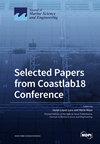基于全向扫描声纳的海笼中卵棘鱼分布估算方法
IF 2.8
3区 地球科学
Q1 ENGINEERING, MARINE
引用次数: 0
摘要
为了准确估计海笼中卵棘鱼的分布情况,利用全向扫描声纳和深度学习技术开发了一种新方法。该方法包括区分水层和逐层聚类数据,以实现精确的位置估算。该方法包括两个主要部分:鱼群识别和鱼群聚类。首先,采用全向扫描声纳在海洋网箱内进行螺旋探测,捕捉鱼类图像数据。然后对这些图像进行标记,为增强型 CS-YOLOv8s 模型构建训练数据集。训练完成后,CS-YOLOv8s 模型被用于识别和定位图像中的鱼类。其次,将网箱划分为水深间隔为 40 厘米的水层。使用 DBSCAN 方法对每个水层的识别坐标数据进行聚类,生成每个水层中鱼的位置坐标。最后,综合所有水层的坐标数据,确定鱼类在网箱内的总体分布情况。多次实验结果表明,该方法能有效估计卵棘鲷在海洋网箱中的分布,与人工检测到的分布非常吻合。本文章由计算机程序翻译,如有差异,请以英文原文为准。
A Method for Estimating the Distribution of Trachinotus ovatus in Marine Cages Based on Omnidirectional Scanning Sonar
In order to accurately estimate the distribution of Trachinotus ovatus in marine cages, a novel method was developed using omnidirectional scanning sonar and deep-learning techniques. This method involved differentiating water layers and clustering data layer by layer to achieve precise location estimation. The approach comprised two main components: fish identification and fish clustering. Firstly, omnidirectional scanning sonar was employed to perform spiral detection within marine cages, capturing fish image data. These images were then labeled to construct a training dataset for an enhanced CS-YOLOv8s model. After training, the CS-YOLOv8s model was used to identify and locate fish within the images. Secondly, the cages were divided into water layers with depth intervals of 40 cm. The identification coordinate data for each water layer were clustered using the DBSCAN method to generate location coordinates for the fish in each layer. Finally, the coordinate data from all water layers were consolidated to determine the overall distribution of fish within the cage. This method was shown, through multiple experimental results, to effectively estimate the distribution of Trachinotus ovatus in marine cages, closely matching the distributions detected manually.
求助全文
通过发布文献求助,成功后即可免费获取论文全文。
去求助
来源期刊

Journal of Marine Science and Engineering
Engineering-Ocean Engineering
CiteScore
4.40
自引率
20.70%
发文量
1640
审稿时长
18.09 days
期刊介绍:
Journal of Marine Science and Engineering (JMSE; ISSN 2077-1312) is an international, peer-reviewed open access journal which provides an advanced forum for studies related to marine science and engineering. It publishes reviews, research papers and communications. Our aim is to encourage scientists to publish their experimental and theoretical results in as much detail as possible. There is no restriction on the length of the papers. The full experimental details must be provided so that the results can be reproduced. Electronic files and software regarding the full details of the calculation or experimental procedure, if unable to be published in a normal way, can be deposited as supplementary electronic material.
 求助内容:
求助内容: 应助结果提醒方式:
应助结果提醒方式:


